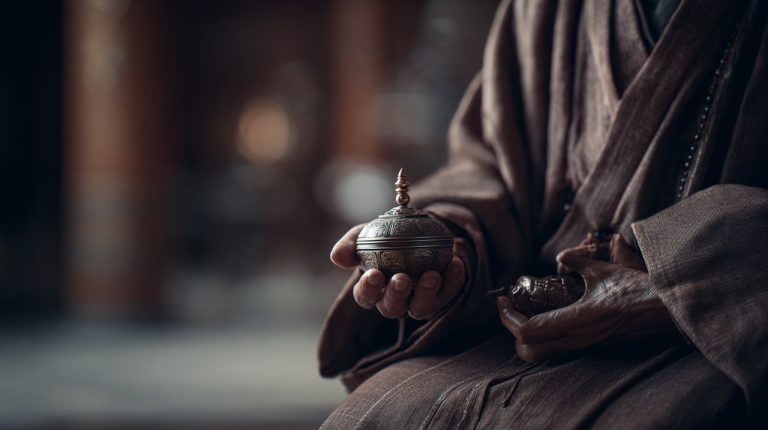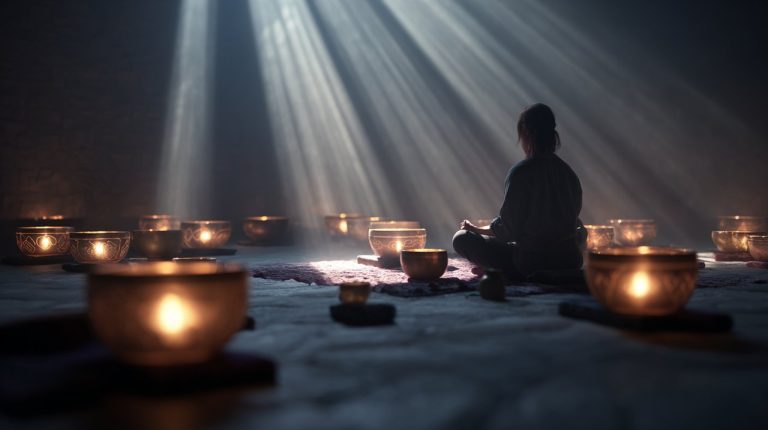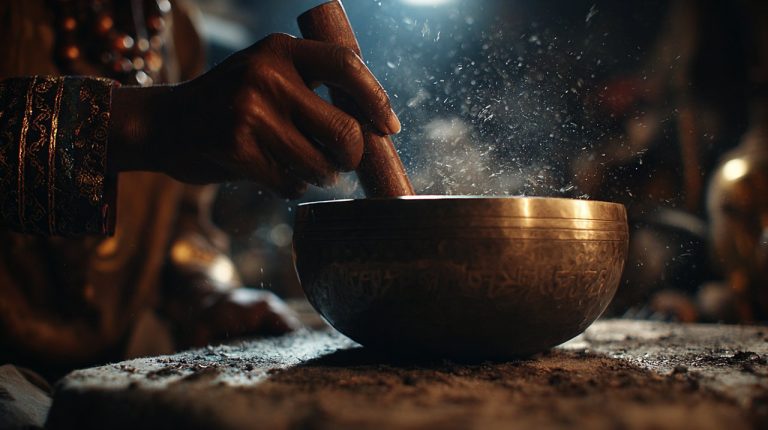Buddhist Perspectives on Health and Spiritual Nourishment
In our modern quest for optimal health, we often meticulously explore external factors—from cutting-edge supplements to specialized diets. Yet, what if the most profound secret to lasting vitality lies not in what we consume, but in what we cultivate within?
This article delves into a powerful, ancient truth: that true holistic well-being is fundamentally rooted in a robust spiritual life, challenging us to re-evaluate the deep connection between our inner world and physical health.
The Interplay of Spiritual and Physical Well-being
Here, we explore the intricate dance between our spiritual and physical existence, asserting that internal harmony is the true cornerstone of external health. Think of it as two sides of the same coin: our inner life, often called our spiritual self or soul, forms the fundamental core of who we are.
Our physical body then serves as its external manifestation—the visible expression of that inner reality. We often become deeply attached to this physical form, experiencing anxiety at the slightest discomfort.
This natural human tendency, however, frequently leads us to an imbalance: an overemphasis on physical existence at the expense of spiritual nourishment. We prioritize material sustenance above all else, often overlooking what truly sustains us.
Yet, a profound truth emerges when we look deeper: a strong internal spiritual life isn’t just part of our well-being; it’s the very foundation of it. When this core spiritual level is robust and vibrant, our material and physical lives naturally begin to thrive.
Conversely, when there are unresolved issues at this foundational spiritual level, they almost inevitably manifest as problems in our external physical body. The connection is far more direct than we often realize.
Beyond Conventional Health Approaches
Stepping beyond conventional paradigms, we discover how ancient wisdom illuminates a transformative pathway to health. Traditional health advice often centers on addressing physical symptoms with external treatments.
In stark contrast, Buddhist principles for well-being offer a profoundly different lens. This isn’t about ignoring the body; rather, it’s about understanding that lasting health and true vitality originate from an inner transformation—a dedicated spiritual healing practice that fundamentally redefines our relationship with both our physical self and the broader world.
The Mind as the Architect of Our Reality
This section dives into a profound Buddhist assertion: our mind doesn’t just perceive reality; it fundamentally shapes it, including our physical being and our environment. It’s a concept that finds echoes in modern understanding of the mind-body connection, where our psychological states profoundly influence physiological processes.
To truly grasp this, consider the analogy of a movie. The vibrant scenes you see on screen are direct projections from a film reel. If there’s no film, there’s no image. If the film is damaged, the projected image will inevitably be flawed.
In precisely the same way, our physical body and our entire external environment are seen as profound projections of our inner spiritual life. Without a vibrant, healthy internal spiritual life, our physical body and environment simply cannot manifest their full potential.
Shared Karma and Individual Experience
A natural question often arises when discussing the mind’s role in projecting reality: if our environments are truly mind projections, how do so many people perceive the exact same scenes? Consider visitors to the Great Buddha Temple, for example; they all behold the same majestic Hall of Buddha Recitation.
This phenomenon introduces the nuanced Buddhist concept of shared karma—a collective destiny or influence that enables individuals to experience outwardly similar realities. The Buddha himself taught that under the influence of shared karma, experiences can appear virtually indistinguishable, creating a common ground of perception for many.
Yet, even within this seemingly shared reality, individual karma continues to shape unique experiences. What appears as a grand temple to a human might be an entirely different universe to an ant, for instance. This illustrates the profound diversity of karmic paths and individual perceptions, even within a collective framework.
Cultivating a Joyful Mindset for Optimal Health
At the heart of Buddhist philosophy lies the teaching that everything is created by the mind. This means that achieving a truly healthy body fundamentally requires us to start with the mind itself.
A mind consistently cultivated in a state of joy naturally fosters physical well-being. Conversely, a perpetually troubled or agitated mind almost inevitably leads to ill health—the connection is undeniable.
This principle extends beyond physical health to our very perception of ‘heaven’ and ‘hell.’ These aren’t external realms to be found; they are, in essence, states of consciousness that we create. Joy is heaven; suffering is hell.
While we all naturally desire happiness and instinctively shun pain, these profound states are ultimately self-created through our own mental attitudes and inner landscapes.
A poignant anecdote from Buddhist history powerfully illustrates this point: A governor once asked a Zen master, “Master, do you believe in heaven and hell?”
The master, with profound wisdom, calmly retorted, “Is someone like you worthy of knowing the answer?”
Insulted, the governor erupted in anger. The master then, with an unwavering gaze, declared, “Hell is your current state.”
Through this clever exchange, the master revealed a profound truth: anger itself creates a hellish experience. To dwell in a state of anger and hatred is, in essence, to reside in a self-made hell, for as the saying goes, “Hell has no gates; it is brought upon by oneself.”
Practical Pathways to Spiritual Nourishment
Having explored the profound theory, let’s now transition to practical application. This section delves into tangible methods for cultivating spiritual nourishment and unlocking its often-overlooked health benefits.
While the desire for health and longevity is universal, relying solely on worldly supplements and material fixes for physical well-being often proves insufficient. The truth is, a life rich in spiritual nourishment and a vibrant inner state can undeniably lead to a healthy body, even without these external aids.
This often prompts a crucial question: Is this truly possible for us? For many, achieving such a state of self-sustenance might seem unattainable, almost mythical. Yet, historical accounts and spiritual traditions consistently suggest otherwise.
For those whose inner life is profoundly nourished, extraordinary capacities—even survival without conventional food or water—can emerge. Throughout history, many Buddhist masters, from the venerable Bodhidharma (Damo) to the modern master Xuyun, have exemplified this profound inner resilience.
These figures are said to have subsisted on the “joy of Zen” during deep meditation, reaching states of being that transcend typical physiological needs. Bodhidharma famously meditated facing a wall for nine years, and Xuyun reportedly maintained his health after meditating in Mount Zhongnan for approximately twenty days without external sustenance.
While these are indeed exceptional cases of advanced spiritual attainment, they serve as powerful testaments to the potential of inner transformation. They are not prescriptive examples for everyday life but rather illustrate the profound depth of spiritual practice required and the extraordinary possibilities it unlocks. Our current limitations don’t invalidate these truths; they simply highlight the journey ahead.
The Transformative Power of Meditation and Mindfulness
So, what truly nourishes our inner life? It’s not external material sustenance, but genuine replenishment drawn from our inherent wisdom and universal energy. This is where practices like meditation and mindfulness become direct conduits to health and vitality.
These practices offer immediate access to this internal wellspring. Even a few minutes of meditation, when you’re feeling tired, can restore energy and spirit, much like the rejuvenation experienced after a refreshing bath and a good night’s sleep.
However, it’s crucial to distinguish meditation from ordinary sleep. Meditation involves entering a serene, sleep-like state but with a clear, unclouded mind. Sleep, by contrast, is typically a state of dullness.
Both, in their own ways, serve to replenish internal energy. Yet, the most potent method of nourishment involves transforming the body’s internal structure through consistent spiritual practice, ultimately leading to a healthy and even radiant external appearance.
Inner Transformation, Outer Radiance
The direct impact of this inner work is often visibly profound. Let’s consider a powerful example of how inner transformation can manifest as outer radiance.
I recall a conversation with a young female disciple who shared a remarkable personal experience. She recounted, “Master, before I began practicing Buddhism, my complexion was poor, and no skincare product seemed to help. After embracing Buddhist principles and truly transforming my mindset, I no longer need skincare products, and my husband now tells me I am more beautiful.”
This testimony powerfully illustrates a core truth: without a genuine change in mindset, even the most expensive skincare products or nutritious foods may offer only limited, superficial effectiveness.
Embracing Wholeness: A Path to Lasting Health
In conclusion, our journey towards lasting, holistic health ultimately emphasizes the profound purification of the mind. It’s about diligently working to eliminate the “seeds” of negative mental states that cloud our inner landscape.
These fundamental obstacles include:
- Greed
- Anger
- Ignorance
- Arrogance
- Doubt
As we clear away these impediments, our inherently clear, unblemished, and joyful mind naturally emerges. This internal purification removes the very obstacles that prevent our external realm—including our physical appearance—from flourishing without hindrance.
Just as a Tibetan healing bracelet might symbolize protection and well-being, remember that true and lasting health originates from within. This profound teaching, passed down by the Buddha, guides us toward an understanding of foundational insights that comprise his enduring legacy.
The Human Path: Five Insights into the Buddha’s Enduring LegacyWhat deeper truths about your own well-being might this transformative perspective unlock?
💡 Frequently Asked Questions
The article states that our inner spiritual life is the foundation of our existence, and it determines our external physical body and even our environment.
To have a healthy body, one must start with the mind. If your mind is constantly in a state of joy, your body will be healthy; if your mind is always troubled, your body will be unhealthy.
The article suggests that while external supplements can support physical health, they are insufficient on their own. True nourishment comes from ample spiritual nourishment and a vibrant inner life state, which is more effective than relying solely on material products.
Heaven and hell are self-created states of mind. Heaven is associated with joy, while hell is associated with suffering, anger, and other negative mental states that one brings upon oneself.
Spiritual practice and meditation replenish internal energy and can change the body's internal structure, leading to a healthy and beautiful external appearance. It helps eliminate negative mental seeds like greed and anger, allowing the inherent joyful mind to emerge.







